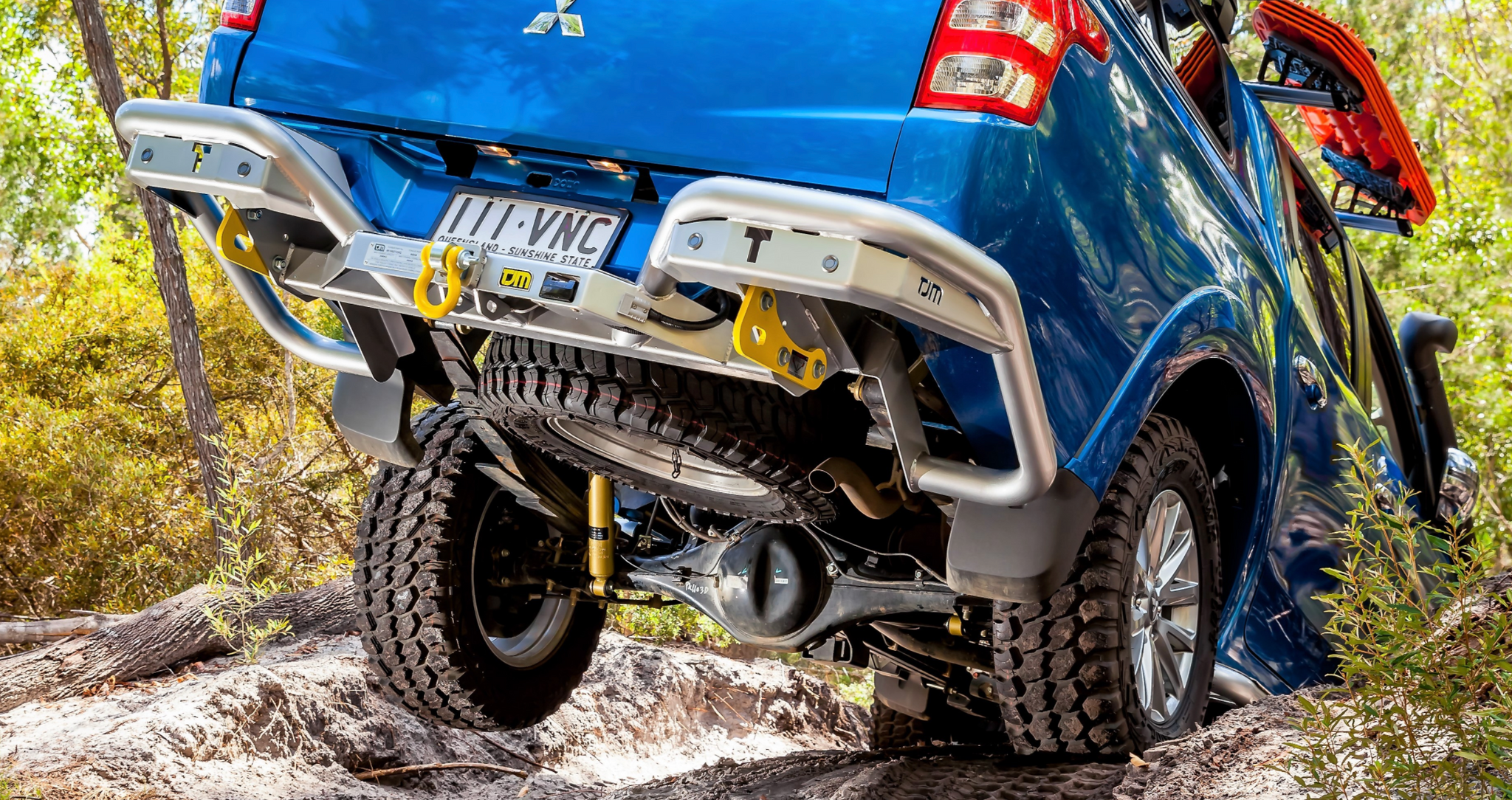Hema's Tips For Rear Bar Replacements
Most 4WDs in Australia have a bullbar on the front for protection but oftentimes, the rear has a flimsy, plastic bumper, often reducing departure angles and clearance. Many four-wheel-drivers have instead opted to replace the rear bumper to add protection to the back end of the 4WD and to improve these departure angles, with some bars also including jacking and recovery points and a place to mount accessories.

DOES IT NEED REPLACING?
Depending on where you’re driving or if you can even be bothered, sometimes replacing the rear bumper isn’t worth it. There are many benefits though, other than added protection. If your vehicle is unable to have a roof rack installed or if you have no way of safely carrying jerry cans, fuel or water, or if the roof rack is full and you want to install a rooftop tent, the rear bumper can provide you with the luxury of bringing more with you. Other than this, an aftermarket rear bar is often necessary if your rear barn door with the spare wheel attached has sagged over time due to the weight of the rim and tyre, or even if you want to increase the size of your rim, tyre, or both so it no longer fits on the barn door.
If you decide you want to install a long-range fuel or water rank where the spare wheel usually sits, or even if you want another spare tyre if you want to be cautious as you travel to remote locations, a replaced rear bar is highly beneficial.
The added protection is a major reason four-wheel-drivers replace their rear bumper. Oftentimes, being plastic, the rear bumper gets smashed against rocks and the indentations are near impossible to fix, so changing this to one of steel helps protect the vehicle, especially in those close departure angles.
An additional benefit of changing the rear bar is that you can add accessories such as carriers for spare wheels or jerry cans, or even recovery points, integrated trailer sockets and Anderson plug mounts, high-lift jack points and reversing sensors. The ability to remove the carriers when not needed also means you don’t always have to carry excess weight when not overlanding.

WHICH REAR BUMPER?
There are plenty of Australian and overseas manufacturers that supply rear bars to suit your 4WD and needs. Make sure to check that the weld looks good, the protection offered is suitable and that the warranty is decent, including the after-sales services available. While you can get your rear bar made, leading suppliers include Kaymar, ARB, TJM, Outback Accessories and Ironman 4x4. Depending on what you’re after and what additions are added, the pricing can vary anywhere between $800 to $4500.

WHAT ARE THE DISADVANTAGES OF CHANGING THE REAR BAR?
Changing the rear bar, especially from plastic to steel, adds weight to your 4WD, especially behind the rear axle, as with some terrains such as dune climbing, in certain areas both your rear wheels may leave the ground as you bounce up the slope. Accessing the rear of the rig can also be a struggle if you have wheel carriers which can be frustrating if you have your hands full and you have to place everything on the ground to release both arms of the carrier. Make sure to check if your factory exhaust will knock against the bar as you might need to change it. As always, the cost might be daunting for prospective four-wheel-drivers who might not use it to its full advantage.
Weigh up the benefits to your style of four-wheel-driving before you change your rear bumper but as the purchase will most likely last the life of your 4WD, it might be a reasonable investment.









0 comments